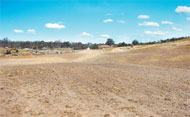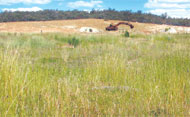
Mulches restore poor catchments


Collaborative projects over the past five years have shown that composting can reduce sediment transport by up to 90 per cent and promote vegetation establishment on previously degraded sites.
The NSW Department of Primary Industries teamed up with the Department of Environment and Climate Change and Hawkesbury-Nepean Catchment Management Authority (CMA) on a number of projects aimed at promoting the use of composted mulches and soil conditioners to restore degraded catchments.
The outcomes of these trials are now being made available to land rehabilitation and catchment management stakeholders in a set of practical guidelines.
The guidelines promote the best practice use of composted mulches and soil conditioners, and outline how to minimise any potential risks associated with them.
They are aimed at anyone involved with catchment management and land rehabilitation projects, and address gully and hillslope erosion, saline discharge areas, degraded soil environments, and other relevant catchment works, such as sediment control.
Key issues covered include specifying the type and quality of product; understanding the benefits and potential risks, application methods and depths, site considerations, and purchasing the products.
Case studies from Hawkesbury-Nepean CMA are also included to show users how composts have been used to rehabilitate degraded catchments.
The guidelines are ready for publication and will be released at a field day in Goulburn within the next few months.
Email:

